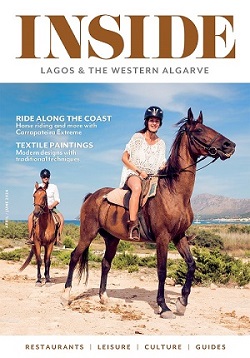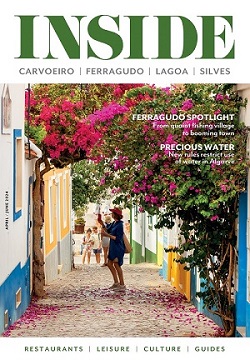New Pestana Golf Course uncovers Archaeological Site that has left experts with several questions
– August 22, 2022
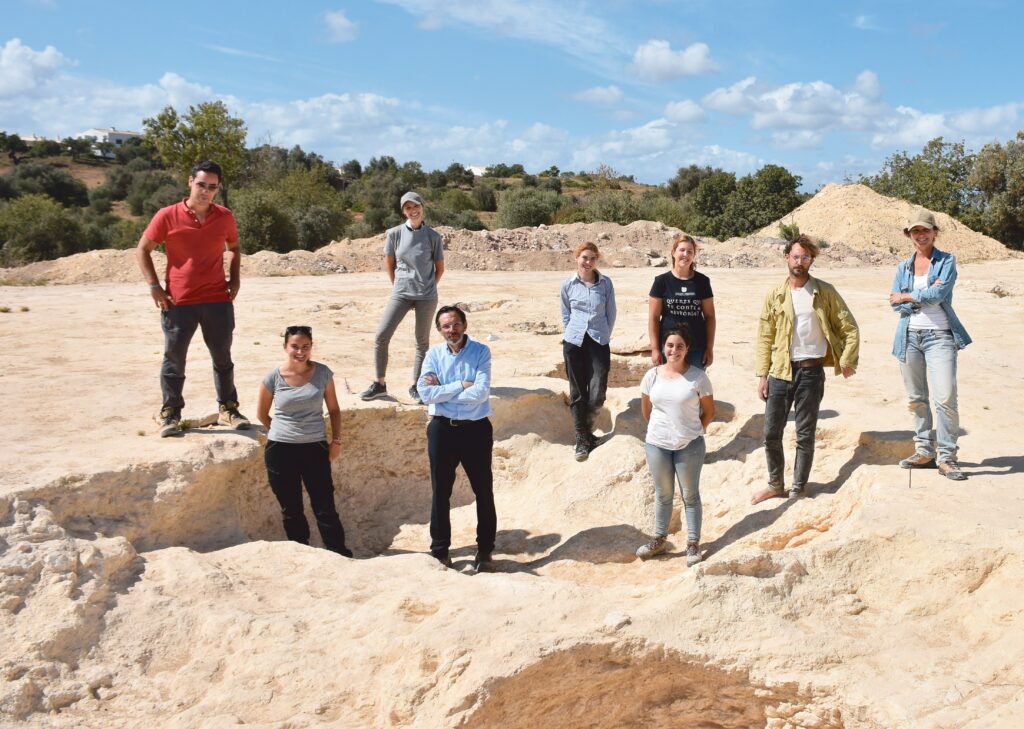
From Left: Francisco Correia, Andreia Avelino, Eduarda Silva (anthropologist), António Cavaco, Ana Pereira, Lara Duque, Sofia Nogueira (anthropologist), João Hasselberg and Catarina Furtado
Construction of a new Pestana golf course between Ferragudo and Lagoa has unearthed a unique archaeological site containing traces of several eras. The works are taking place across a 40-hectare plot of land, but all it took was half a hectare to reveal an array of hidden discoveries.
In layman’s terms, archaeologists have identified 35 structures carved into limestone which are believed to have served as Islamic silos, firstly for the storage of cereals and food, and later as dumps. Also found were Islamic and prehistoric graves and funerary structures from the Middle Neolithic (fourth millennium BC), an era of which not much is known about, and the Chalcolithic (or Copper) Age (third millennium BC).
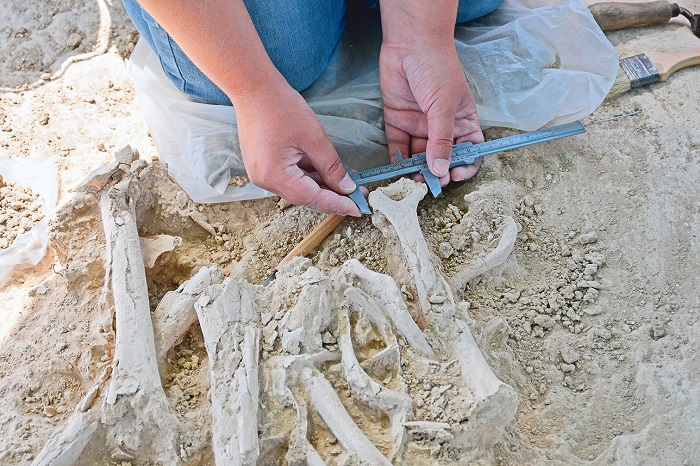
The works started in October 2021 although archaeologists have known this area could be an archaeological treasure trove since 2008, said Francisco Rosa Correia, manager of the archaeological project and co-director of the archaeological digs, which are in the hands of ERA Arqueologia. In 2010, na archaeological survey established that a 5,500sqm area known as Quinta dos Poços – precisely the location where the 18-hole golf course is being built – had possibly been a temporary Islamic military camp.
These latest archaeological digs have completely thrown that hypothesis out the window, Francisco Correia said. “In March, we cleared the land to try to delineate the area of the archaeological site,” he said, adding that 91 structures were identified and a huge chronological diachrony (evolution of language over time). Archaeologists also found objects in stone and architectural structures which effectively ruled out the military camp theory.
With these latest findings, they now believe that an Islamic town may have been located nearby. “The number of silos (we found) always suggests that possibility,” said the archaeologist, who believes the area may have been an alqueria (small rural community established near cities).
“Historical records show that there was a community that was believed to be located to the south of Lagoa which was never found,” he added. “We do not know how big it may have been, because all these vestiges are concentrated in one area. The truth is that, with all the earthmoving, nothing else special was found,” António Cavaco, head of Carvoeiro Golfe and the golf course’s construction works.
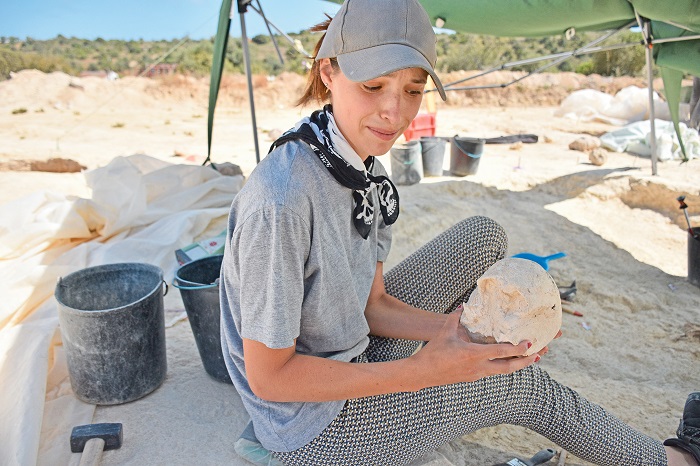
Further studies are needed, but some of the archaeological finds seem to date back to between the 9th and 11th centuries AC, in the midst of the Islamic occupation of the Algarve. Archaeologist Catarina Furtado explained why the silos that have been found are believed to have acted as rubbish dumps later on, as several remains of food such as shellfish and even the skeletal remains of an entire cow were found.
Fragments of simple and glass ceramics, “some produced locally, and others imported, surely,” were also found. “From the Islamic period, we also have five graves which we were able to exhume. Only two contained human remains. The bodies were buried on their sides, according to religious requirements, facing west, with no associated materials,” the archaeologist revealed.
“There is a big question. We are not assuming that this was a living place. But it is possible that one existed nearby. We found a structure with some elements of combustion, which may have been an oven, very rudimentary and for temporary use. But we do not have anything that indicates that there was a domestic occupation here. We can imagine that the community is not very far way,” Furtado added.
Neighbouring communities
A tomb dating back to the Chalcolithic (halfway through the third millennium BC) revealed not only human remains but also tools such as axes, flint blades, limestone and xyst collars and arrowheads, similar to those found in Alcalar in the neighbouring borough of Portimão.
Francisco Correia believes there was a “possible cultural relationship” between the two areas, despite the distance and the “natural border” that the Arade River posed. The archaeologist admitted his surprise with the discoveries “because this seems to be a very old place”.
“We also found three tombs from the Middle Neolithic, which dates back around 5,500 years and which is still mostly unknown. That is where the big surprise is. What we know so far is that, in the Algarve, we have only found burials from this period in caves. Burials dug into rocks, we did not know about,” he said. Catarina Furtado describes the discovery as very impressive. “The Middle Neolithic is, in fact, a little difficult to understand in structural terms. That is why these graves, in particular, caught our attention,” she said.
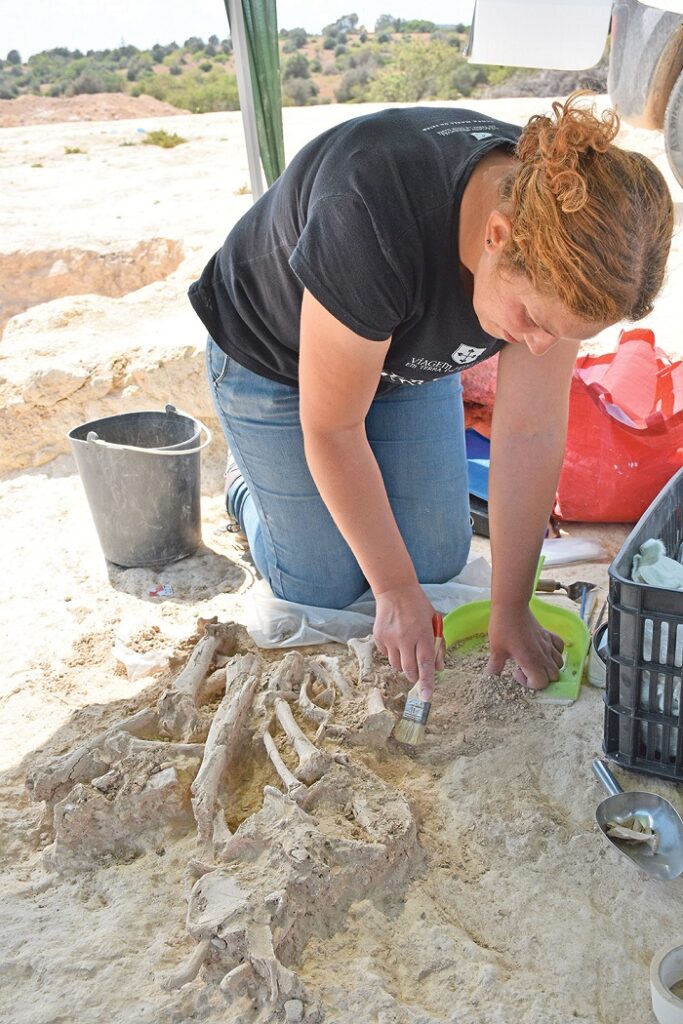
However, the details of how these graves were constructed are scarce. “We only found the base, but they were surely closed spaces where the bodies were placed. They weren’t exactly buried. In other words, in these Middle Neolithic graves, most of the deceased were transported already in a state of decomposition and placed inside a hollow, empty area, and we know this from the digs. Surely, they had a roof, a covering, but we do not know how it would be,” explained archaeologist Miguel Lago. However, this whole area acted like a cemetery, of tribute to their ancestors; a space where certain communities would take their deceased. Later on, it became an Islamic site. Digs in other areas will help us understand exactly what that Islamic site was, because we have a lot of doubts,” he said.
Golf course welcomes archaeological finds
António Cavaco has revealed that the future golf course’s clubhouse will have a space for a museum where the archaeological finds can be exhibited. “Golf courses always have a theme, and I believe, in this case, it will be archaeology which will motivate golfers to take a story with them to tell,” he said. A video of the archaeological works will also be used to promote the borough, Cavaco added.
He also left a word of advice for other developers who may worry about archaeological finds delaying their plans. “This is an investment of around €6 million. With some planning, we were able to complete the archaeological works while at the same time doing some earthmoving where it was possible. It’s all practically completed apart from Hole 1. After the completion of the final report and the approval of the Algarve culture board, we will complete what is left. Normally, when there are constraints and additional costs, that is not well-received by developers. But we think archaeology is an asset to our project,” he said, adding that the golf course should be completed by the last quarter of 2023.












